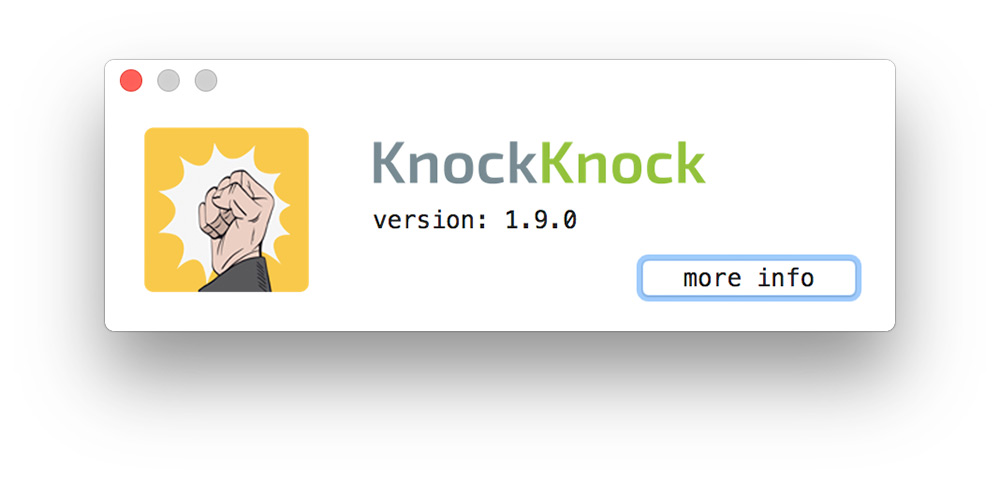
^ The Handbook Of The SAS And Elite Forces.By overcoming isolation with the tap code, prisoners were said to be able to maintain a chain of command and keep up morale.

It was even used when prisoners were sitting next to each other but not allowed to talk, by tapping on another's thigh. It was easy to teach and newly arrived prisoners became fluent in it within a few days. They used it to communicate everything from what questions interrogators were asking (in order for everyone to stay consistent with a deceptive story), to who was hurt and needed others to donate meager food rations.
#KNOCKKNOCK CLIENT 0.92 CODE#
POWs would use the tap code in order to communicate to each other between cells in a way which the guards would be unable to pick up on. In Vietnam, the tap code became a very successful way for otherwise isolated prisoners to communicate. Harris had heard of the tap code being used by prisoners in World War II and remembered a United States Air Force instructor who had discussed it as well. It was introduced in June 1965 by four POWs held in the Hỏa Lò ("Hanoi Hilton") prison: Captain Carlyle "Smitty" Harris, Lieutenant Phillip Butler, Lieutenant Robert Peel, and Lieutenant Commander Robert Shumaker. United States prisoners of war during the Vietnam War are most known for having used the tap code. The code used in the novel is more primitive and does not make use of the Polybius square (e.g. Kurt Vonnegut's 1952 novel Player Piano also includes a conversation between prisoners using a form of tap code. The knock code is featured in Arthur Koestler's 1941 work Darkness at Noon. Like the "knock code", a Cyrillic script version is said to have been used by nihilist prisoners of the Russian czars. The origins of this encoding go back to the Polybius square of Ancient Greece.

If after a pause there are three knocks, they think "Q. For example, if a person hears four knocks, they can think "A. Learning the tap system simply requires one to know the alphabet and the short sequence "AFLQV" (the initial letter of each row), without memorising the entire grid. the character N, ▄▄▄ ▄ ) remains distinguishable from a dot at the end of a character (e.g. To simulate Morse by tapping therefore requires either two different sounds (pitch, volume), or very precise timing, so that a dash within a character (e.g. Morse code, however, requires the ability to create two distinguishable lengths (or types) of taps. īy comparison, Morse code is harder to send by tapping or banging because a single tap will fade out and thus has no discernible length. The letter "X" is used to break up sentences, and "K" for acknowledgements.īecause of the difficulty and length of time required for specifying a single letter, prisoners often devise abbreviations and acronyms for common items or phrases, such as "GN" for Good night, or "GBU" for God bless you. To communicate the word "water", the cipher would be the following (with the pause between each number in a pair being shorter than the pause between letters): The listener only needs to discriminate the timing of the taps to isolate letters. For example, to specify the letter "B", one taps once, pauses, and then taps twice. The tap code is based on a Polybius square using a 5×5 grid of letters representing all the letters of the Latin alphabet, except for K, which is represented by C.Įach letter is communicated by tapping two numbers, the first designating the row and the second (after a pause) designating the column. The method of communicating is usually by tapping either the metal bars, pipes or the walls inside a cell. The tap code has been commonly used by prisoners to communicate with each other.
#KNOCKKNOCK CLIENT 0.92 SERIES#
The message is transmitted using a series of tap sounds, hence its name. The tap code, sometimes called the knock code, is a way to encode text messages on a letter-by-letter basis in a very simple way. Encoding for text messages Latin alphabet tap code table


 0 kommentar(er)
0 kommentar(er)
